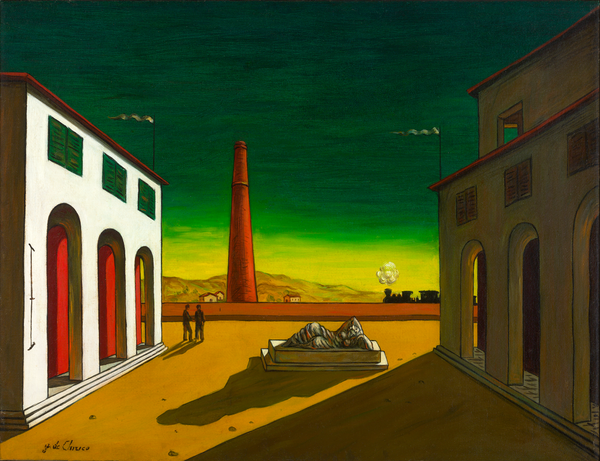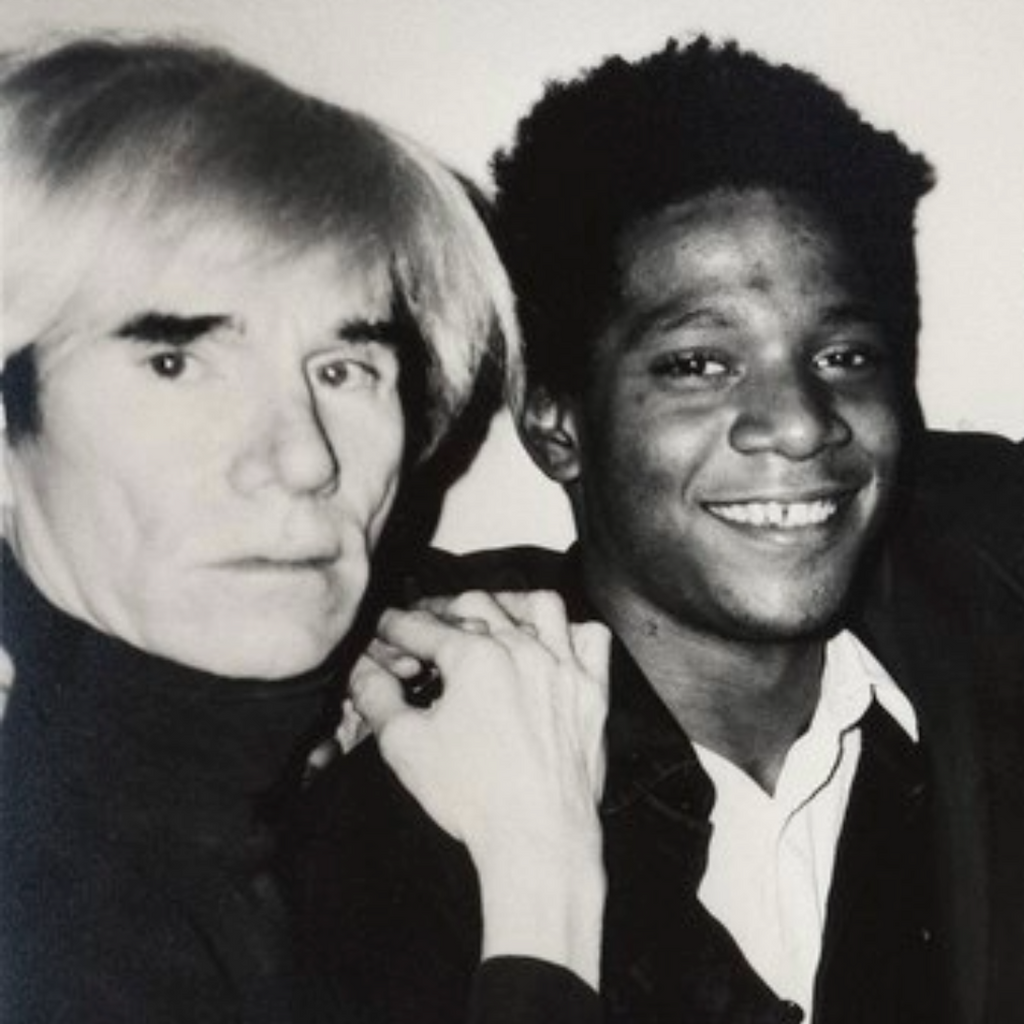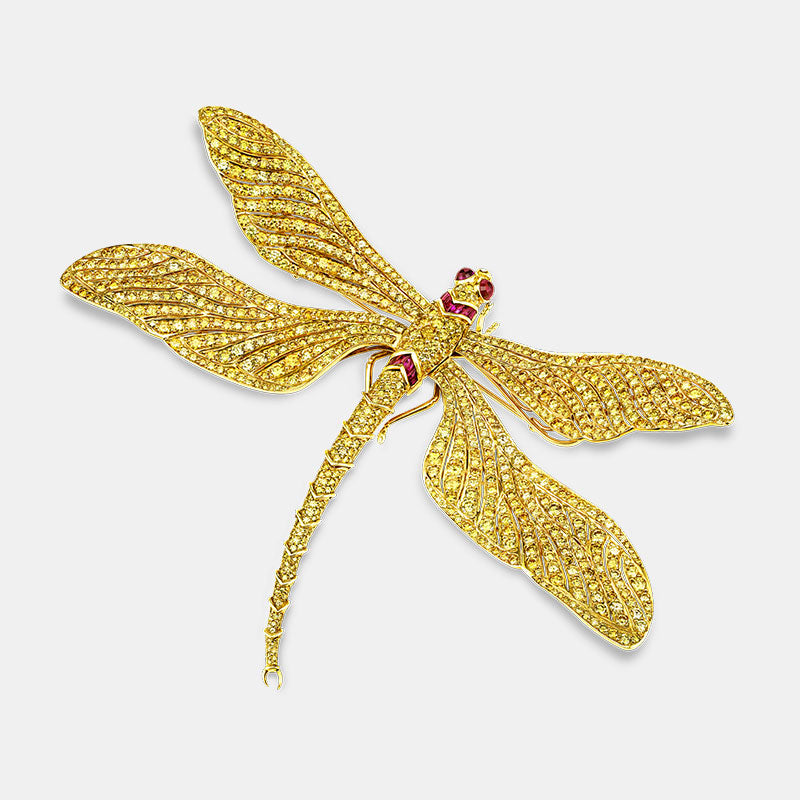Surrealism’s Beginnings
The anti-rational arts movement Dada is often cited as the precursor to the Surrealist movement. The Dada movement began in the 1910s as a response to the destruction of World War I. The group believed that since war was considered logical, then they were going to be anything but. Another early influential figure was the artist Giorgio de Chirico, who in founding the Scuola Metafisica (the Metaphysical School) of painting created one of the most intriguing, enigmatic and memorable art movements in history. He is considered the harbinger of Surrealism, and his visionary work had a profound impact on the leaders of that movement.

So, what does Surrealism mean? In 1924, writer André Breton published the “Manifesto of Surrealism” outlining the concept of Surrealism as the expression of psychic automatism. As a response to the “reign of logic,” André Breton argued for a greater investigation into the vast possibilities of the imagination. Largely inspired by the then-recent breakthroughs of Sigmund Freud's psychoanalysis and Jungian studies about the unconscious mind, Breton proposed “the future resolution of these two states, dream and reality, which are seemingly so contradictory, into a kind of absolute reality, a surreality, if one may so speak.” This would form the foundation of Surrealism and the imagery which would define the artistic movement.
Surrealist Artists to Know
Breton and the Parisian Surrealists, including artists Salvador Dalí and Max Ernst, published the journal La Révolution surréaliste to spread their artwork and ideas and organized their first exhibition in 1905; one among many famous art exhibitions to come. Pictured below are some of the primary Surrealists based in Paris with André Breton. From the 1920s to 1960s, Surrealism continued as a loosely organized movement, spreading across Europe and the U.S. The Surrealism movement is often cited as greatly influential to the development of other artistic movements, such as Abstract Expressionism. Here we will focus primarily on painters working in the first half of the 20th century, though the style has endured and proliferated in a variety of mediums; read on to learn more about a few of these famous surrealist artists.

Bottom Left: Tristan Tzara, Andre Breton, Salvador Dalí, Max Ernst, Man Ray
(1930)
Salvador Dalí
“Surrealism is destructive, but it destroys only what it considers to be shackles limiting vision” - Dalí
Salvador Dalí is perhaps the most famous Surrealist artist, notorious for his melting clocks and lobster telephone. The visionary certainly created some of the most enigmatic avant-garde paintings, films and sculptures of the group. Dalí believed in mining the subconscious for imagery, leading to dreamlike landscapes and a fixation on the metaphysical.
It comes as no surprise then that Dalí was also fascinated with the esoteric and took an interest in the mysticism of tarot card divination in his Surrealist artwork. Representing a unique blend of spiritualism and Surrealism, the below gouache painted collages hail from Salvador Dalí’s fascinating and highly inventive deck of 78 custom-made tarot cards. Browse available Salvador Dalí art for sale at M.S. Rau.


Rene Magritte
Immediately recognizable for his bowler caps, green apples, clouds and pipes, Magritte was a Surrealist painter whose often witty paintings continue to challenge viewers to question what they see. Active in Paris in the early 20th century, Magritte worked with Breton and the rest of the surrealists on dreamy scenes. However, his works tended to explore ordinary objects in unusual contexts seeking new meanings, as exemplified by the piece The Treachery of Images, which famously states Ceci n’est pas une pipe (“This is not a pipe.”)
Like the very best Surrealist artworks, the below work Le Carnaval du Sage is both innovative and engaging, asking us to rethink our perceptions of reality. At its core, the painting represents the desire to reveal what is hidden - in this case, the identity of his masked central figure, a gorgeous, statuesque nude, joined by a watchful ghost, a baguette and an eerie street.

Leonora Carrington
Inspired by the mysticism of wild animals, fairytales and folklore, artist Leonora Carrington sought a more liberated self-expression through the expanded realities of the Surrealist movement. The below self-portrait invokes the dreamlike, as a wild-haired Carrington convenes with the hyena, reimagining her identity within a surreal landscape. However, Carrington was not interested in the dream analyses proposed by Freud, instead looking to magic and symbolism in her art. After the onset of World War II, Carrington fled the conflict for Mexico where she lived for the rest of her life, and became a major influence on the international development of Surrealism.

Want to learn more about self portrait artwork? Read about some of the most famous portraiture artists and their lasting influences.
Paul Delvaux
After completing his initial artistic training at the Académie Royale des Beaux-Arts in Brussels, Belgian artist Paul Delvaux exhibited with other famous Surrealist artists Dali, de Chirico, and Magritte at the Exposition Minotaure of 1934. Though his memorable, atmospheric compositions are reminiscent of his contemporaries in some ways, Delvaux rejected the Surrealist label for his work.
The below work by Delvaux exhibits the artist’s shared interest in dreams and mysticism with the Surrealists, as the moon shines over a procession of ethereal women heading toward an open door. The artist deftly combines his Academic training with symbolist and surrealist influences to create his own distinct visual language — a mature, embodied style that sets his work apart within this art movement.

Max Ernst
A founding member of the Surrealists, Max Ernst fully aligned himself with André Breton and Sigmund Freud in his conceptual approach to artmaking. He had also been involved with the precursor Dada, working hard to free himself of over-analysis in search of the irrationality and spontaneity required of automatism. Ernst also experimented with a broad range of materials and techniques, creating compositions with odd textures and shapes. As a veteran of World War I, some of Ernst’s works also drew from the rage and brutality of his experiences at war as he used artworks as a vent for expression. The juxtaposition of disparate and bizarre imagery in the below work Celebes exemplifies Ernst’s style of Surrealism.

Surrealism’s Continued Significance
Although the art movement began over a century ago, Surrealism continues to inspire artists and mesmerize viewers.
From in-depth analysis of 20th-century art movements to engaging profiles of famous abstract artists, visit our blog to learn everything you need to know about great art throughout history. And if you’re looking to add to your collection, browse our selection of original and rare art pieces to find a work that speaks to you.







